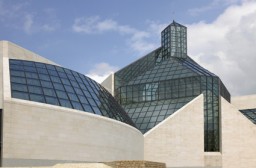Memory Lab I – photography challenges history : Ré-écritures
Contemporary photography, especially in its post-photographic development, brings out artists who question the image as a medium. Rather than invent new images, these artists use photography to “re-write” and / or “re-present” (ie present) historical and political events, They often rely on existing representations but leave their personal marks.
Contemporary photography, especially in his post-photographic development brings out artists who question the image as a medium. Rather than invent new images, these artists use photography to “re-write” and / or “re-present” (ie present) historical and political events often relying on existing representations, while by making it appear personal traces.
Sometimes their visual commentary is captivating, even caustic or confusing. The images thus reinterpreted, whether photographic or videographic, voluntarily puts the viewer under tension.
By the play of fascination and alienation caused by the larger formats present in the museum setting, the artist manages to change the message. He works on the flow of communication, deconstructs the original narrative of the image and gives photographs and videos a new aesthetic dimension.
With its “Iconography” series (2013) ( seven portraits of “leaders” political, military and religious of the era of the Cold War) David Birkin revisits press photography. He opens the door to the museum for those images whose destination was different, and in a sense comments on the somehow decline of journalism. Selected from an archive of more than five hundred thousand clichés, the contact sheet images were enlarged and “de-captioned,” while keeping the marks and annotations of the publisher.
The inspiration from Broomberg & Chanarin is also often the archive. Their book Holy Bible and the series of photographs which it relates to are inspired by the notebook of Bertolt Brecht, considered as his personal bible in which he pasted images, underlined sentences, crossed out words and wrote down everyday thoughts. This process links the private and the public sphere, the facts and their interpretations.
The video installation “Blue Train” by Canadian artist Vera Frenkel, which brings together video, still images and text tells the story of the mother of the artist fleeing Nazi Germany to go to Paris. Inspired by images of the Black Star Archive and the Werner Wolff funds of the Ryerson university, this installation mixes documents and fiction, the private and the public and thus creates, by the multiplication of perspectives, a narrative at once serene and emotional.
In Antony Cairns LDN ( for London ) series, the narrative is disrupted by a shifted temporality which makes it very mysterious. Using 35 mm film and solarization the “urban scapes” seem to evolve out of time. As fixed between presence and absence, between past and future, his urban views tell the story of an apocalypses of a reality disfigured by the photographic process.
Throughout the exhibition the photographic dimensions takes on a political meaning where the aspects of time are enhanced by the juxtaposition of corresponding or opposing images that speak to the collective memory.
With “Zement”, Tatiana Lecomte, creates images of places that take on a near abstract character. The name of the series was the code name of the Ebensee concentration camp which became a city after the war. As often with Lecomte photography, whether she uses found images or her own, the art draws on historical landmarks she reworks in a kind of iconoclastic photographic act.
The importance given to aspects of visual construction as an invitation to reconsider the meaing of images is also visible through the video installation “Das Fenster” ( The window ) of Gàbor Ősz. The enchanting landscape is nothing but the Obersalzberg, a place of historical importance as it was Hitler’s summer residency, still exuding a mystical aura since the Middle Ages until today.
Thus, all of the exhibits, either through the photographic process or material existence, drawing on an historical and religious iconography open new avenues for interpretation of today’s reality or past events. [/ lang_en]
